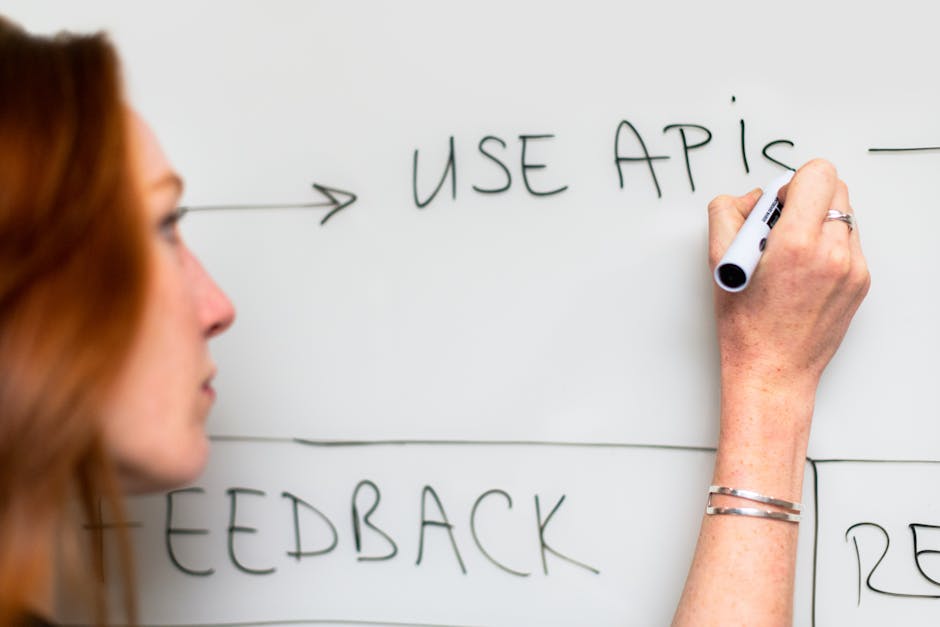Elevate Your Digital Marketing: Sensory SEO for User Engagement
In the fast-paced world of digital marketing, traditional strategies often fall short of captivating users. However, a revolutionary approach known as Sensory SEO is paving the way for richer user experiences while enhancing Google rankings. By engaging multiple senses, this innovative strategy can boost user engagement and drive lasting connections with your target audience. In this article, we'll delve deep into Sensory SEO, exploring its principles, applications, and the steps you can take to integrate it into your existing marketing strategy.
What is Sensory SEO?

Sensory SEO is an emerging concept that goes beyond basic search engine optimization. It focuses on creating multisensory digital experiences that appeal to the various senses—sight, sound, touch, taste, and smell. When consumers interact with content that stimulates more than just one sense, their engagement intensifies, leading to longer site visits and increased brand recall. This holistic approach allows marketers to forge deeper emotional connections, fostering customer loyalty and positively impacting search rankings.
The Importance of Engagement in SEO

User engagement has become a critical factor in determining search engine rankings. Google’s algorithms prioritize websites that provide valuable and captivating content; when users spend more time on a page, search engines perceive the material as high-quality. Thus, the goal of Sensory SEO is not just to enhance engagement but to leverage that engagement to improve your visibility on search engine results pages (SERPs).
Research indicates that multisensory experiences can enhance memory retention by as much as 50%. Imagine creating a website that not only has visually appealing graphics but also incorporates thoughtful auditory elements that resonate with your brand. This not only enriches user interactions but also encourages users to explore your offerings further.
The Elements of Sensory SEO

To effectively implement Sensory SEO, marketers must consider various multisensory elements and how they interplay with user experience.
Visual Appeal

Visual content—photos, videos, graphics, and layouts—dominates web engagement. Research shows that audiences are overwhelmingly drawn to visually stimulating content, making it vital to design websites and materials that are visually appealing. High-quality images relevant to your brand and products, combined with captivating video illustrations, can create a lasting impact. Including infographics can also distill complex information into visually engaging formats that are easier for users to digest.
Auditory Elements

Sound plays a crucial role in user engagement. Background music or sound effects can enhance the storytelling aspect of a brand. For instance, an online cooking class may feature sizzling sounds to evoke feelings of warmth and appetizing visuals. Careful curation of auditory components ensures that your audience feels connected to your content on a deeper level. Always remember, though, to offer users the option to control sound effects, as not everyone will appreciate auditory elements.
Tactile Interactivity

Touch is a tactile experience, and in a digital sense, this can translate into interactive design elements. Websites that offer interactive features—like sliders, clickable infographics, and virtual reality experiences—help users feel as if they are part of the narrative. By creating tactile experiences, you can keep users engaged and encourage them to explore your offerings, leading to higher conversion rates.
Olfactory and Gustatory Inclusion

While less common in standard digital marketing, the incorporation of scents and tastes is found more often in physical spaces. However, marketers can leverage digital strategies to evoke these senses. Take, for instance, a food blog that describes a delicious dish in such detail that readers can almost smell the ingredients cooking or taste the savory flavors. Effective language can paint vivid, sensory-rich experiences that prompt these sensory reactions even in a virtual format.
Crafting a Sensory SEO Strategy

Creating an effective Sensory SEO strategy involves several integrated steps, moving beyond traditional SEO practices.
1. Identify Target Audience
Understanding your audience is the first step in any marketing strategy. Conduct thorough market research to learn what resonates with your target demographic. What types of sensory experiences are most appealing to them? Personalize content based on these insights to enhance multisensory engagement.
2. Create Compelling Visual Content
Invest in high-quality imagery and engaging video content. As explored in the Augmented Reality strategy, utilizing immersive visuals can significantly boost user interest. Tools like Canva and Adobe Spark provide a user-friendly way to create visually appealing graphics that speak to your audience.
3. Enhance Audio Elements
Whether it’s background music for videos, sound effects on your website, or audio snippets, carefully crafted audio elements can provide an immersive experience. Consider using royalty-free music or partnering with musicians to develop a unique audio brand identity.
4. Optimize User Interface
A seamless and intuitive interface enhances user interactivity. Incorporating tactile features like haptic feedback on mobile devices can deepen engagement. A site designed with proper load speed and mobile responsiveness will ensure users have a pleasant experience regardless of their device.
5. Utilize Emotionally Charged Language
Emotional connections are vital for customer loyalty. Use evocative language that resonates with your audience and evokes sensory reactions. As discussed in emotional intelligence in marketing, tailoring your messaging to stimulate emotions can lead to increased sharing, higher repeat visits, and conversions.
6. Assess Performance Metrics
As you implement sensory elements, closely monitor analytics to evaluate their impact. Metrics such as bounce rates, average session duration, and user interactions will provide insights into the efficacy of your sensory strategy.
7. Iterate and Enhance
Marketing trends continuously evolve. Stay ahead by continually refining your sensory SEO techniques based on feedback and performance data. Engaging with your audience through surveys or polls can provide invaluable insight into further enhancing your approach.
Overcoming Challenges in Sensory SEO
While Sensory SEO holds much promise, it is not without its challenges. Understanding these potential pitfalls can prove beneficial as you embark on your journey.
Balancing Sensory Overload
One challenge is ensuring that your sensory elements do not lead to overwhelming user experiences. Not every visitor will respond favorably to loud music or too many visual stimuli. Maintaining an appropriate balance will keep users engaged without detracting from your content’s core message.
Ensuring Accessibility
Consider all users when designing sensory experiences. Some individuals may have sensory impairments that prevent them from fully engaging with certain elements. Providing options to customize sensory inputs—like adjusting audio or visual settings—will ensure an inclusive digital environment.
Measuring ROI
While sensory SEO can produce a significant positive impact on engagement, quantifying its direct contribution to revenue can be challenging. Focus on those metrics that matter, striving to connect sensory experiences with specifically tracked conversion goals.
Integrating Sensory SEO with Traditional Strategies
Sensory SEO should not be seen as a standalone strategy but rather as an enhancement to your current SEO techniques. Traditional tactics like keyword research, content optimization, and link building can be incorporated into a broader sensory strategy. For example, select keywords that relate not just to what users are searching for but also to the sensory experiences they seek.
Look into how visual elements in SEO have evolved, and explore further insights from sources like Moz. These resources provide valuable information linking SEO and user engagement strategies.
Final Thoughts
Sensory SEO is on the cusp of becoming a vital component of effective digital marketing, especially as we delve deeper into the dynamic landscape of user experience. By incorporating multisensory elements into your strategy, you can create an engaging environment that not only captivates your audience but also positions your website favorably in search engine rankings.
As we move towards 2025, embrace innovation and continually explore how to connect with your audience on multiple sensory levels. Your commitment to creating rich, engaging experiences will set your brand apart in a saturated digital marketplace.
To take your digital strategy to the next level, explore more about enhanced user engagement, such as the insights in listening to algorithms or harnessing biometric data for crafting stronger connections. The journey to effective sensory experiences is filled with potential. Are you ready to transform your marketing strategy?



